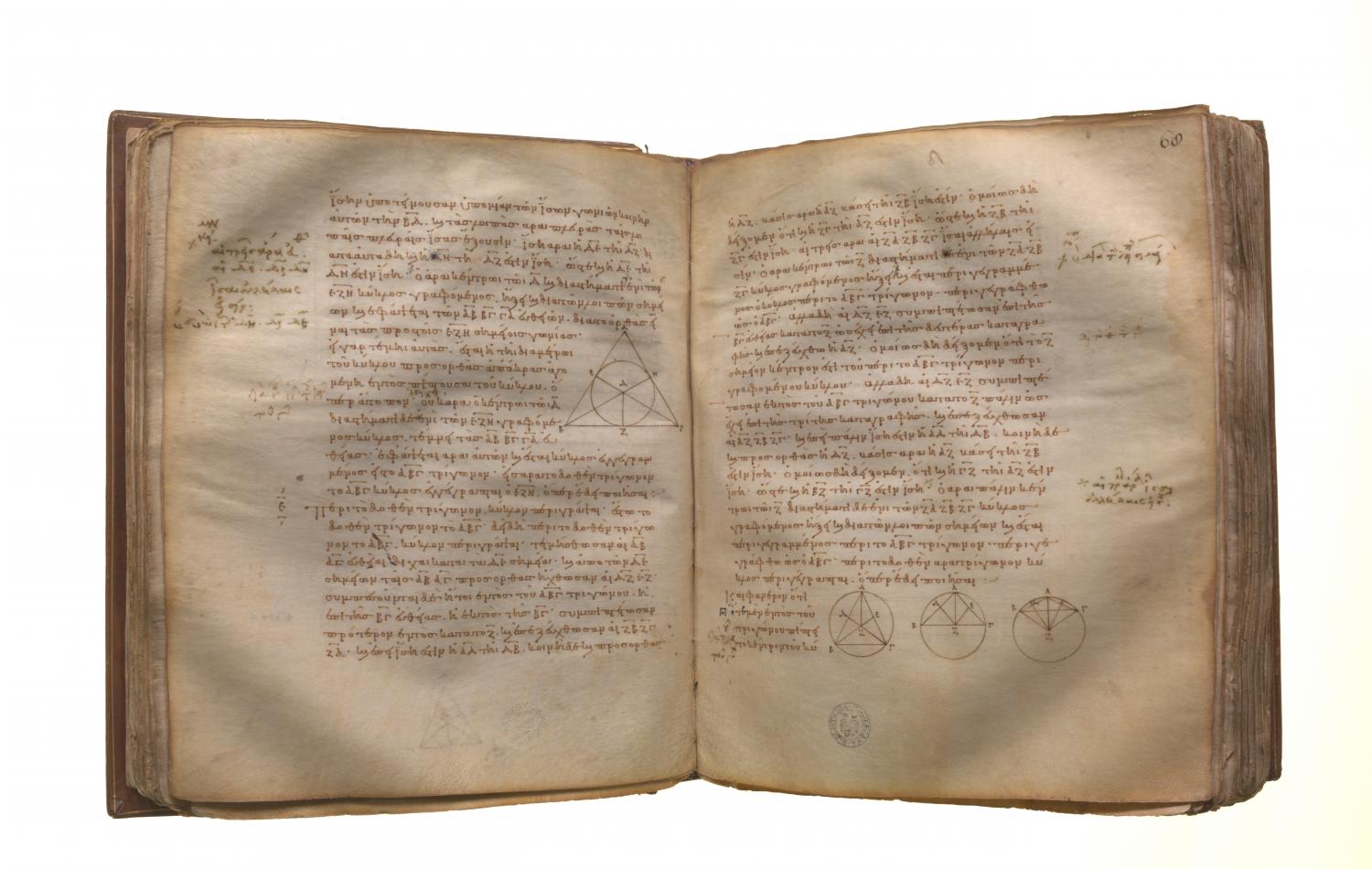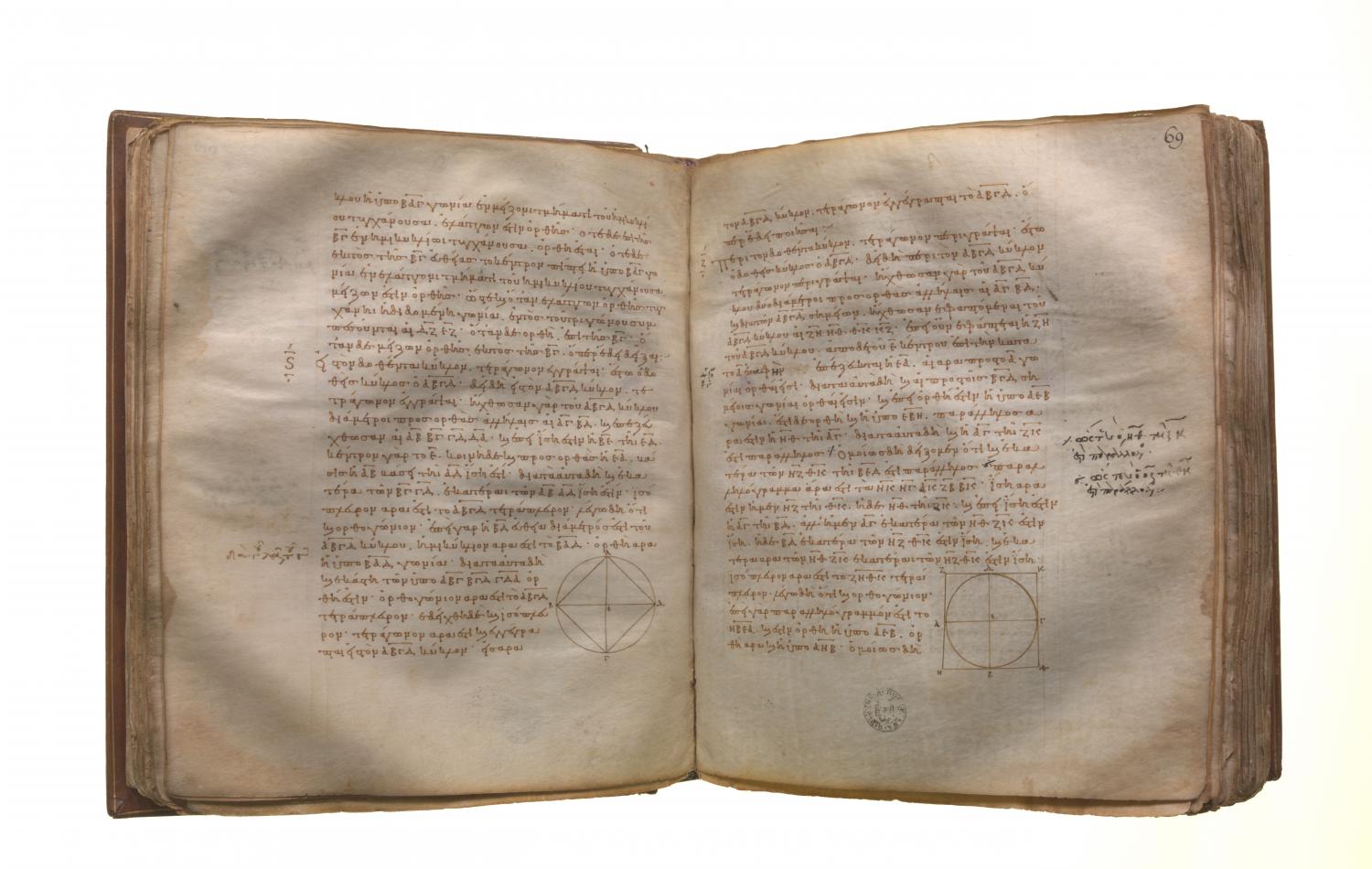Constructions for inscribed and circumscribed figures: Book 4 Proposition 5
Translations
About a given triangle to circumscribe a circle. Let ABC be the given triangle; thus it is required to circumscribe a circle about the given triangle ABC. Let the straight lines AB, AC be bisected at the points D, E [I. 10], and from the points D, E let DF, EF be drawn at right angles to AB, AC; they will then meet within the triangle ABC, or on the straight line BC, or outside BC. First let them meet within at F, and let FB, FC, FA be joined. Then, since AD is equal to DB, and DF is common and at right angles, therefore the base AF is equal to the base FB. [I. 4] Similarly we can prove that CF is also equal to AF; so that FB is also equal to FC; therefore the three straight lines FA, FB, FC are equal to one another. Therefore the circle described with centre F and distance one of the straight lines FA, FB, FC will pass also through the remaining points, and the circle will have been circumscribed about the triangle ABC. Let it be circumscribed, as ABC. Next, let DF, EF meet on the straight line BC at F, as is the case in the second figure; and let AF be joined. Then, similarly, we shall prove that the point F is the centre of the circle circumscribed about the triangle ABC. Again, let DF, EF meet outside the triangle ABC at F, as is the case in the third figure, and let AF, BF, CF be joined. Then again, since AD is equal to DB, and DF is common and at right angles, therefore the base AF is equal to the base BF. [I. 4] Similarly we can prove that CF is also equal to AF; so that BF is also equal to FC; therefore the circle described with centre F and distance one of the straight lines FA, FB, FC will pass also through the remaining points, and will have been circumscribed about the triangle ABC. Therefore about the given triangle a circle has been circumscribed. Q. E. F.[Porism.] And it is manifest that, when the centre of the circle falls within the triangle, the angle BAC, being in a segment greater than the semicircle, is less than a right angle; when the centre falls on the straight line BC, the angle BAC, being in a semicircle, is right; and when the centre of the circle falls outside the triangle, the angle BAC, being in a segment less than the semicircle, is greater than a right angle. [III. 31]. [So that, further, when the given angle happens to be less than a right angle, DF, EF will fall within the triangle, when it is right, on BC, and, when it is greater than a right angle, outside BC: (being) what it was required to do.]

